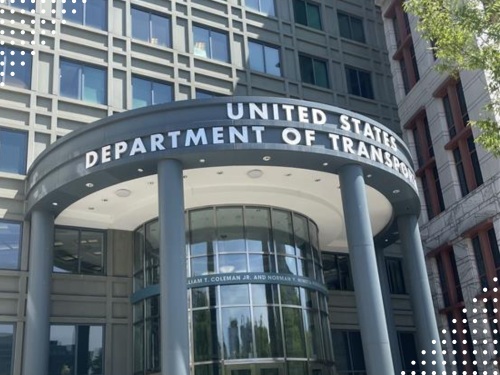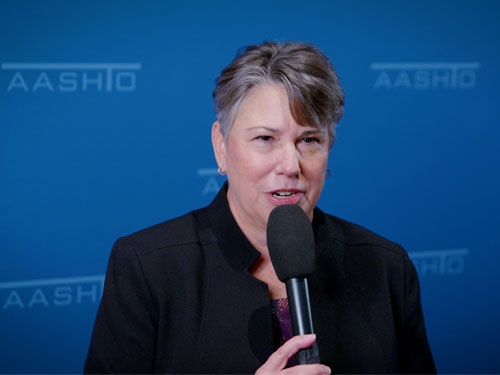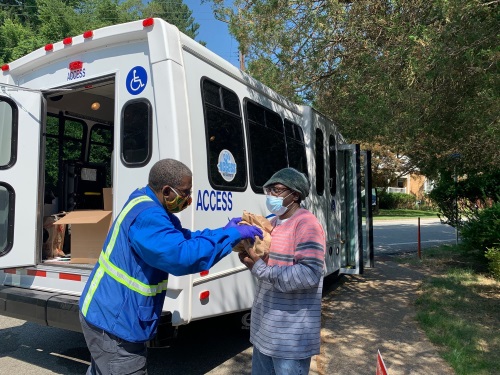A new report by the American Association of State Highway and Transportation Officials illustrates the many economic and quality of life benefits delivered by state department of transportation infrastructure projects.
[Above photo via the Pennsylvania Department of Transportation.]
Building off an inaugural analysis issued in 2020, AASHTO’s latest report – entitled The Benefits of Transportation: The 2021 Round-Up of State DOT Solutions that Deliver Benefits to Communities and Citizens – and its supporting website showcase specific transportation projects and programs on a state-by-state basis that support economic development and improve people’s lives.

The 2021 report features just a sampling of the many transportation projects and programs benefiting individual citizens and businesses across the country. Meanwhile, the updated website also features an interactive map that sorts the examples by state or by the type of benefit provided, such as increasing safety, protecting the environment, and boosting the economy.
The report also highlights a 39-page macroeconomic analysis conducted by the Florida Department of Transportation, which found that the state’s transportation projects should yield an average $4 of benefits for every dollar invested in all transportation modes, including highway, transit, rail, airports, seaports and waterways, and spaceports.
That translates into $164 billion worth of economic benefits for Florida alone over the next 30 years – roughly $5.4 billion per year – in terms of economic value as measured by gross state product over the next three decades ($61 billion), increased personal income ($72 billion), and increased industry output ($99 billion).

“It’s vital that we listen to our constituents and citizens and understand what their expectations are from us,” explained Victoria Sheehan, commissioner of the New Hampshire Department of Transportation and AASHTO’s president for 2020-2021, in a statement.
“But we must also continue to make them aware of how we’re investing in transportation, why we’re making the decisions that we’re making, and, most importantly, how those investments and choices are improving communities,” she said.
“Being recognized nationally for one of our highway projects shows our dedication to improving infrastructure for our citizens and visitors,” noted Shawn Wilson, Ph.D., secretary of the Louisiana Department of Transportation and Development, in a separate statement.

Wilson also serves as AASHTO’s vice president for 2020-2021.
”The I-20/Tarbutton Road project was a major investment for our state very early in this [Governor John Bel Edwards (D)] administration and is already showing massive returns in the form of improved safety, reduced congestion, and economic development,” he explained.
“It also demonstrates how beneficial it is to have cooperation with the mayors and local government leaders,” Wilson said.

“Benefiting the lives of America’s citizens and businesses is a core mission of state DOTs across the country,” added Jim Tymon, AASHTO’s executive director.
“State DOTs strive to deliver the most effective and efficient transportation system possible, with the aim of strengthening and growing economic activity by increasing productivity, enhancing jobs and labor market accessibility, opening new markets for businesses, and optimizing supply chain efficiency for freight movement,” he emphasized.
AASHTO said it builds its transportation policy recommendations around transportation serving as the “key facilitator” for a higher purpose: to provide the safest system possible, highest possible quality of life, economic growth, and the most robust economic opportunities for everyone.
AASHTO’s core surface transportation reauthorization principles are:
- Timely reauthorization of a long-term bill to prevent unnecessary program disruptions and delays in safety and mobility benefits to states and communities.
- Enact a long-term, sustainable revenue solution to the Highway Trust Fund to provide multiyear federal funding stability to support state transportation investment needs.
- Increase and prioritize formula-based funding to the states, which optimally balances national goals with state and local decision-making.
- Increase flexibility, reduce program burdens, and improve project delivery to speed up the distribution of transportation investments while protecting the environment and lowering project costs.
- Support and ensure state DOTs ability to harness innovation and technology to achieve a safer and more resilient, efficient, and secure multimodal surface transportation system.
New Hampshire DOT’s Sheehan emphasized many of those points during a Senate Committee on Environment and Public Works hearing held on February 24.
“Projects that state DOTs undertake connect people, enhance the quality of life for our citizens, and just as important, they stimulate economic growth in each community where they are built,” she explained in her written testimony.
A well-performing transportation network allows American families to benefit both as consumers from lower priced goods and as workers by gaining better access to jobs; and also allows businesses to manage inventories and move goods more cheaply and get employees reliably to work,” Sheehan said.
 Top Stories
Top Stories
USDOT Makes $1.5B Worth of BUILD Grants Available
December 19, 2025 Top Stories
Top Stories

